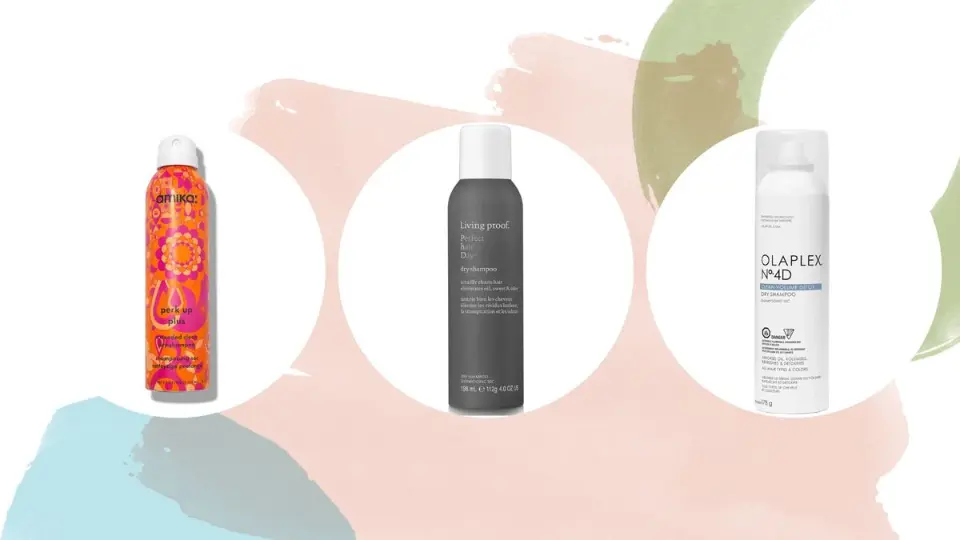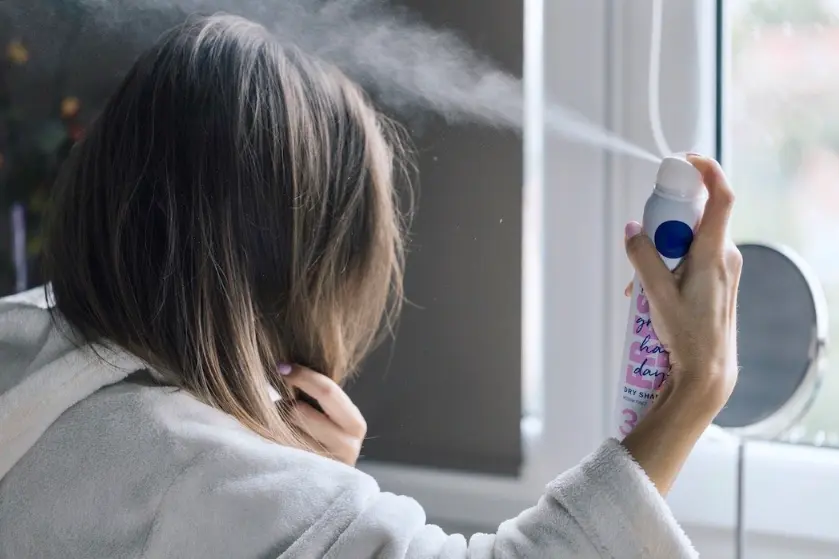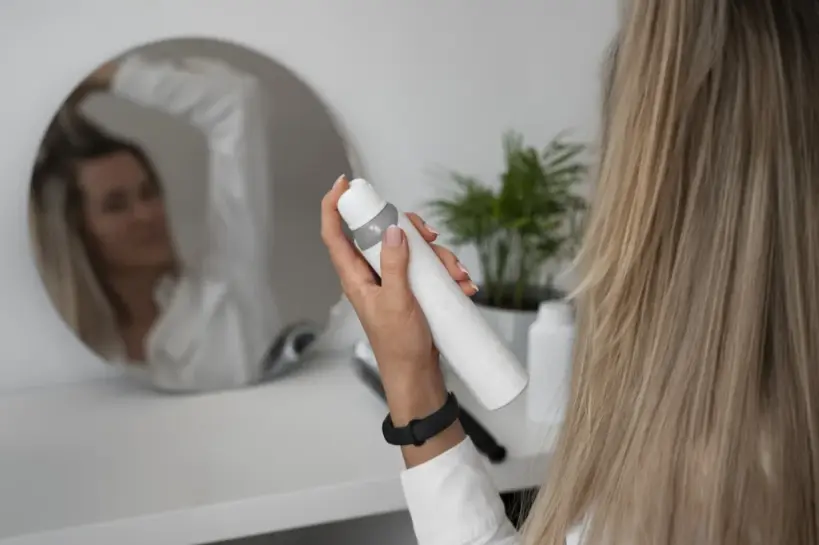For those who desire to clean their hair without daily washing and drying it, dry shampoo has become a lifeline. It provides a fast fix for oily or limp hair, so extending your look for another day or two. But given your particular hair type, how can you maximize dry shampoo? Everything you need to know about dry shampoo—including advice on application, the best dry shampoos for various hair types, and whether dry shampoo damages your hair—will be covered in this book. Let’s begin now.
Describe Dry Shampoo and Its Mechanism
One hair care tool meant to revitalize your hair without using water is dry shampoo. It comes usually as a dry shampoo spray or in powder form. But just what is dry shampoo, and how does it work?
Dry shampoos mostly consist of alcohol or starch-based components, which assist to absorb extra oil and filth from your scalp. Applied correctly, the lotion removes oils from your scalp and roots, so cleaning and freshening your hair. Although dry shampoo spray is aesthetically pleasing, its simplicity of use is only one aspect; another is the need of applying the correct formula for your hair type and demands.
Certain contemporary dry shampoos additionally feature UV protection, moisture retention, or even hair strengthening components mixed in. Dry shampoo is thus a more flexible hair care tool than it has ever been.
Advantages of Dry Shampoo
Especially if done correctly, using dry shampoo has several advantages. The following are some really noteworthy benefits:
- Save Time: One of the most clear-cut dry shampoo advice is that it will save time. A quick fix for a conventional wash when you’re pressed for time is dry shampoo.
- Long hairstyles: By keeping your hair appearing fresh for longer, dry shampoo helps stretch your blowout or hairdo. Many people include it into their weekly hair care schedule.
- Frequency of washing: Less frequent washing helps maintain hair colour and avoid dryness for those with coloured or processed hair. Should I wash my hair following a dry shampoo, you might wonder? Although regular cleaning is still essential, dry shampoo can cut frequency.
- Adds volume and texture: Dry shampoo is a go-to product for those with fine hair since it provides quick volume and texture if your hair usually gets flat throughout the day.
These advantages make dry shampoo an excellent tool for preserving your style and ensuring your hair looks fresh. Still, knowing how to apply it effectively is absolutely vital.
How to Make the Most Use of Dry Shampoo?

Applying dry shampoo can make all the difference, depending on the correct approach. Here’s a detailed walk-through guide for using it:
- Shake the bottle: To guarantee the dry shampoo spray is uniformly dispersed, shake the bottle first.
- Section your hair: Divide your hair. Holding the container around six inches from your head, divide your hair into pieces and mist the dry shampoo at the roots.
- Let it lie: Let the product sit for a minimum of two to five minutes. The shampoo absorbs extra oils only during this waiting time.
- Brush or Massage it: Into your scalp gently using your fingers or a brush to equally distribute the dry shampoo.
A critical piece of advice regarding dry shampoo is not overdoing it. Overabundance of products may cause a white residue to develop that gives your hair powdered appearance. For best results, pay special attention to your scalp since oil generation is the most important.
Top Dry Shampoos for Various Hair Types
Not all dry shampoos are made equally, hence the most outstanding results depend on selecting the right product for your hair type. These ideas draw on hair type:
- For Oily Hair: If your hair is greasy, search for an excellent dry shampoo with high oil absorption to help. For this kind of hair, powder-based solutions usually perform best since they can efficiently absorb more grease.
- For Fine Hair: Those with fine hair should choose lightweight formulations free of weighting their strands. Often acting as a volumizer, a good dry shampoo for oily hair gives your hair a more full appearance.
- For Thick Hair: If your hair is thick, you will want a solution that can manage the excess oil and deposits that accompany having thicker hair. Select a dry shampoo spray providing extended freshness.
- For Curly Hair: Curly hair calls for moisture, hence a dry shampoo spray free of alcohol and sulfates is a preferable option. Search for treatments that both rejuvenate your scalp and retain the inherent moisture of your curls.
Selecting the best dry shampoo for your particular type of hair guarantees that you are optimizing the advantages of the product and preventing any possible problems.
Is dry shampoo wrong for your hair?

People often wonder, “Is dry shampoo bad for your hair?” The response relies on your frequency of use and whether you apply it using correct ways.
Using dry shampoo excessively might cause accumulation on the scalp that might clog hair follicles and hence impede hair development. Overuse of it could dry out your scalp, causing irritation or perhaps dandruff. Still, dry shampoo is not damaging to your hair if used rarely and sensibly.
Always gently clean your scalp with a mild wash, following numerous uses as a helpful dry shampoo tip. This guarantees the complete elimination of any residual material, thus preventing product accumulation. Remember, moderation is really essential!
Should You Use Dry Shampoo and Then Wash Your Hair?
You could ask, “Should I wash my hair after using dry shampoo?” The quick response is: ultimately yes.
Although dry shampoo is a temporary fix for oily hair, it is not a replacement for frequent washing. Use it for a day or two between washes, but be sure to thoroughly cleanse your scalp afterward to get any accumulation gone.
Your lifestyle and kind of hair will determine how often you should wash it. For those with really oily hair, a conventional wash could be required more regularly. Good dry shampoo for oily hair, however, can help you stretch the time between washes without sacrificing the condition of your scalp.
Professional Advice for Optimal Use of Dry Shampoo
Consider these professional dry shampoo advice to maximize your dry shampoo spray:
- Apply before bed: Apply dry shampoo at night before sleeping for the greatest results. This lets the product absorb oil as you sleep, functioning overnight.
- Use it as a styling agent: Dry shampoo adds texture and volume as well. This is a fantastic trick for prolonging the life of a blowout or adding traction to your hair for updos.
- Don’t spray too close: Apply dry shampoo spray, holding the bottle at least six inches away from your scalp, not too close. Too near spraying could cause unequal distribution and noticeable residue.
- Brush thoroughly: After applying, make sure to brush through your hair to distribute the product fairly and prevent accumulation.
This advice will enable you to maximize your best dry shampoo and maintain healthy and fresh hair.
How Frequent Should One Use Dry Shampoo?
One of its secrets is knowing how often you should use dry shampoo. While this product helps to revive your hair between washes, it shouldn’t wholly replace normal shampoo. Your unique schedule and hair type will guide your frequency of using dry shampoo:
- For Oily Hair: Those with oily hair may find themselves reaching for dry shampoo more frequently, but it’s important to restrict use to two or three times each week. Overuse can produce accumulation and clogged hair follicles even with the best dry shampoo for oily hair.
- For Dry Hair: If you have dry hair, you should cut back on the usage of dry shampoo even more since it could aggravate dryness. Using it once a week, concentrate just on the roots.
Moderate use and regular cleansing of your scalp will help you to preserve a good balance between freshness and hair condition.
DIY Alternatives to Commercial Dry Shampoos
You can create your own dry shampoo spray at home using simple household items for those wishing to avoid commercial goods or search for natural substitutes. Here’s a basic do-it-yourself recipe:
- For Light Hair: For a reviving smell, mix cornstarch with a few drops of essential oil. Like store-bought dry shampoo spray, the cornstarch absorbs extra oil.
- For Dark Hair: To prevent the white tint some dry shampoos leave behind, toss the cocoa powder into your cornstarch mixture.
If you wish to avoid chemicals, DIY dry shampoos are an excellent substitute; they can be just as effective as the top dry shampoos available.
In summary
If used properly, the very flexible product dry shampoo can change your hair care regimen. Dry shampoo spray is your go-to fix whether your roots are oily, you want to keep your style intact, or you want to save time. Following these dry shampoo guidelines and selecting the finest dry shampoo for your hair type can help you maintain fresh, voluminous, and healthy-looking hair without overwashing. Remember, prevention of any possible problems, including dryness or accumulation, depends on moderation. Thus, make careful use of dry shampoo and appreciate how it improves your daily hair care regimen!

